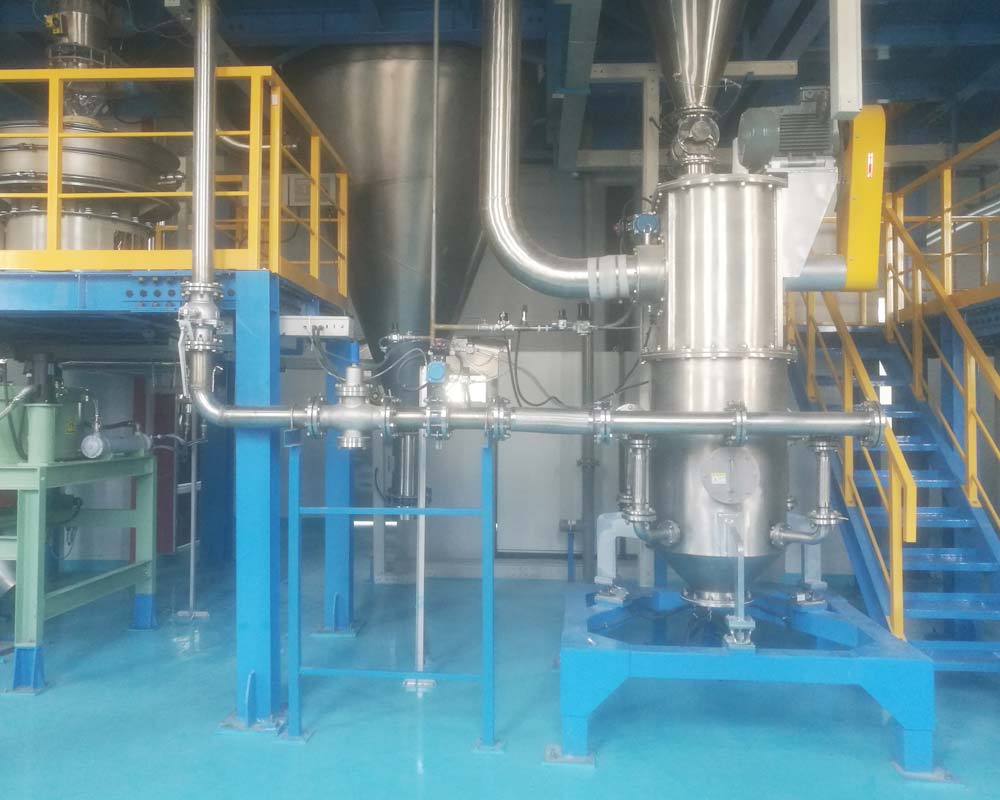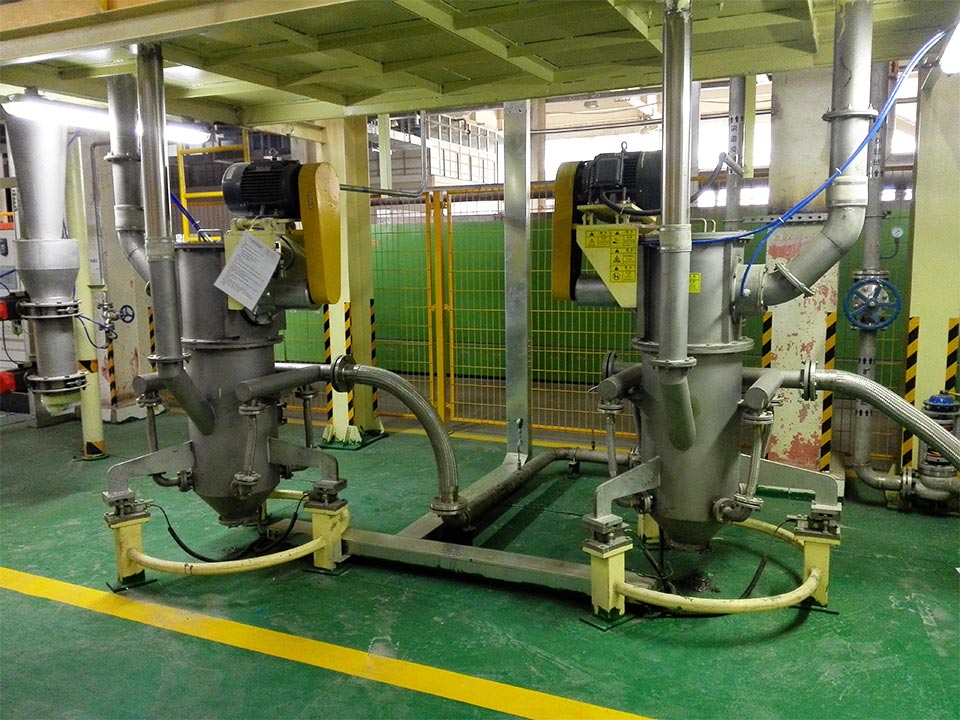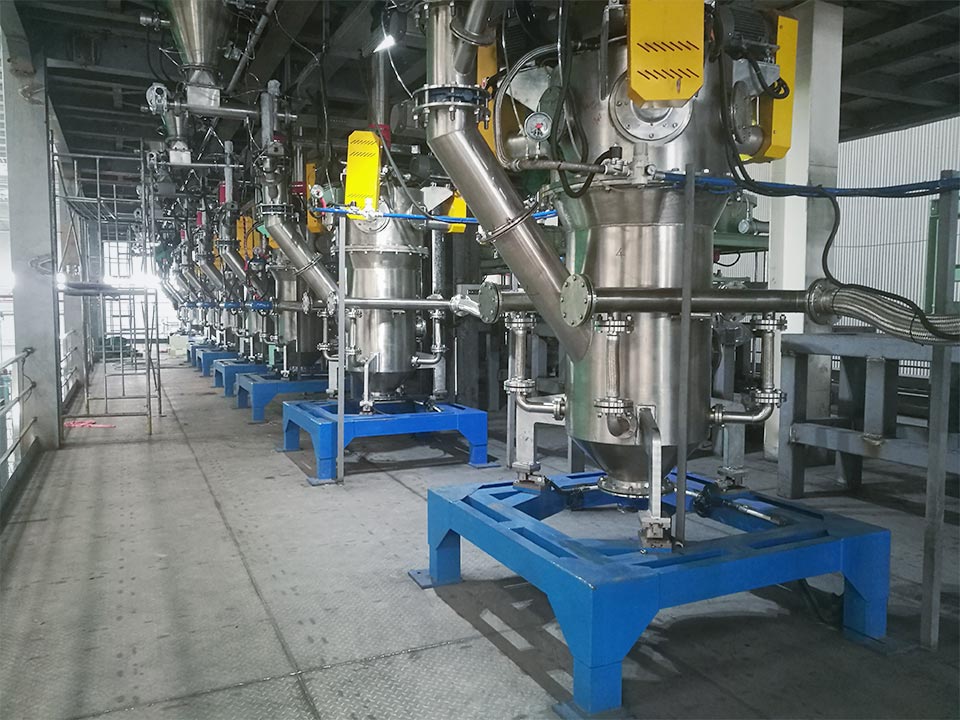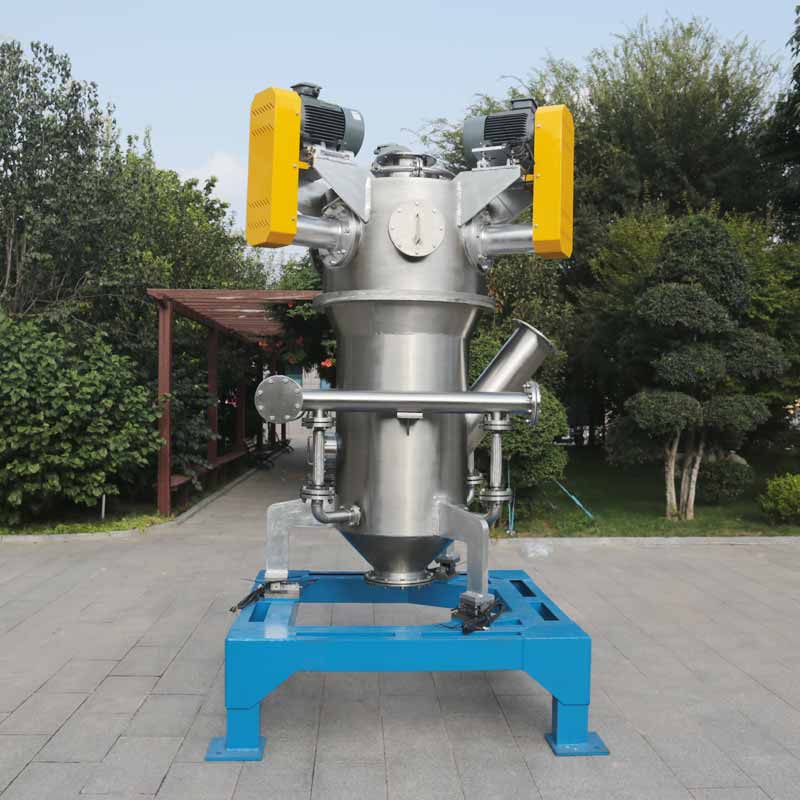Questions & answers about jet mill processing
The jet mill has become a commonly used processing equipment in the industry. The jet mill is widely used in chemicals, mining, abrasives, refractory materials, battery materials, metallurgy, building materials, pharmaceuticals, ceramics, food, pesticides, feed, new materials, It has a wide range of applications for ultra-fine grinding, breaking and particle shaping of various dry materials in environmental protection and other industries.
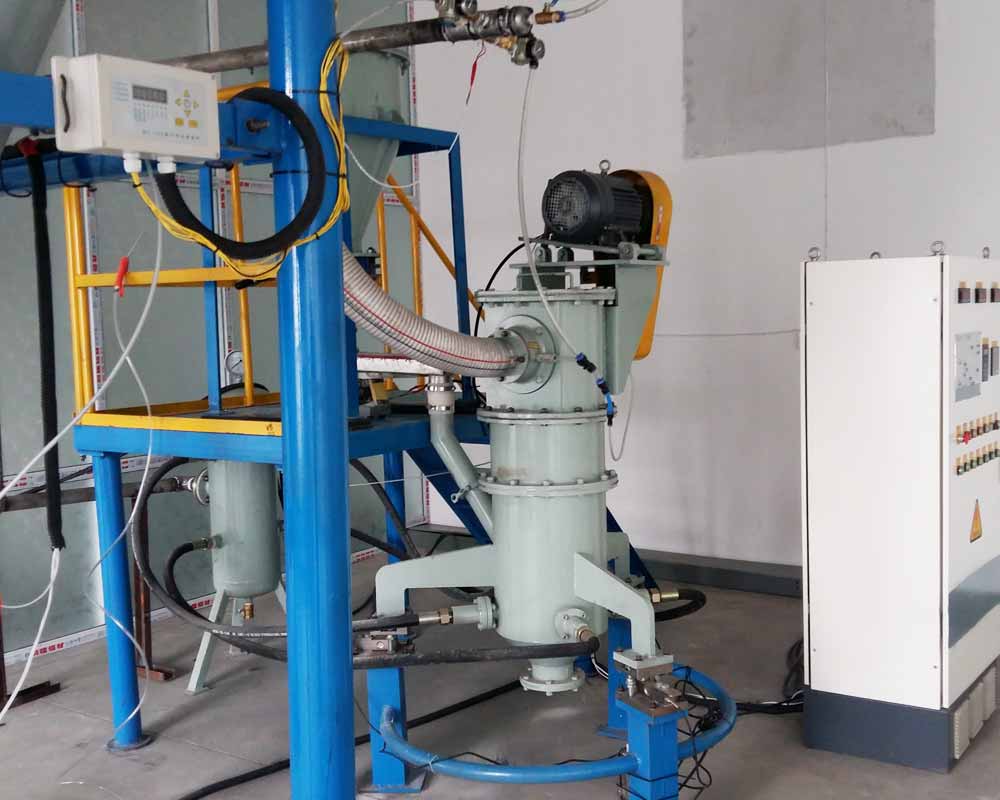
1. What are the main jet mills used in the industrial industry? In addition, among these types, which ones are used more?
The jet mills used in the industry mainly include flat jet mills, circulating tube jet mills, counter jet jet mills, target jet mills, and fluidized bed counter jet jet mills. Among the five types, flat jet mills, circulating tube jet mills, and fluidized bed counter-jet jet mills are used more frequently.
2. If very fine raw materials are subjected to ultra-fine grinding, can a jet mill be used? In addition, whether the feeding speed of the grinder will affect the granularity of the finished product?
For ultra-fine grinding of very fine raw materials, jet mills can be used. The feeding speed in the jet mill will not affect the particle size of the finished product.
3. What is the reason for the insufficient processing fineness of the jet mill?
If the processing fineness of the jet mill is not enough, it depends on the specific situation. If this problem occurs with a new machine, it is because the selection is incorrect, or the selection is wrong. If the problem occurs again after using for a period of time, it is because there is abrasion or malfunction in the machine and equipment. At this time, it should be handled by professional maintenance personnel and cannot be handled without authorization.
The jet mill runs without heating, pollution, and easy to clean
Jet mill is a commonly used grinding processing equipment, which can be used for dry grinding treatment of various materials with Mohs hardness 1-10, especially for some materials suitable for high hardness, high purity and high added value. The particle size of the product can be controlled between D97: 2-150 microns and can be adjusted very well. The particle shape is also very good, and the particle size distribution is relatively narrow. Therefore, jet mills are favored by powder processing companies in various industries.
The jet mill and cyclone separator, dust collector and fan form a complete grinding system. The jet mill has a wide range of applications and fine finished products, covering a wide range of industries, such as metallurgy, diamond, ceramic pigments, medicine, pesticides, food, etc.
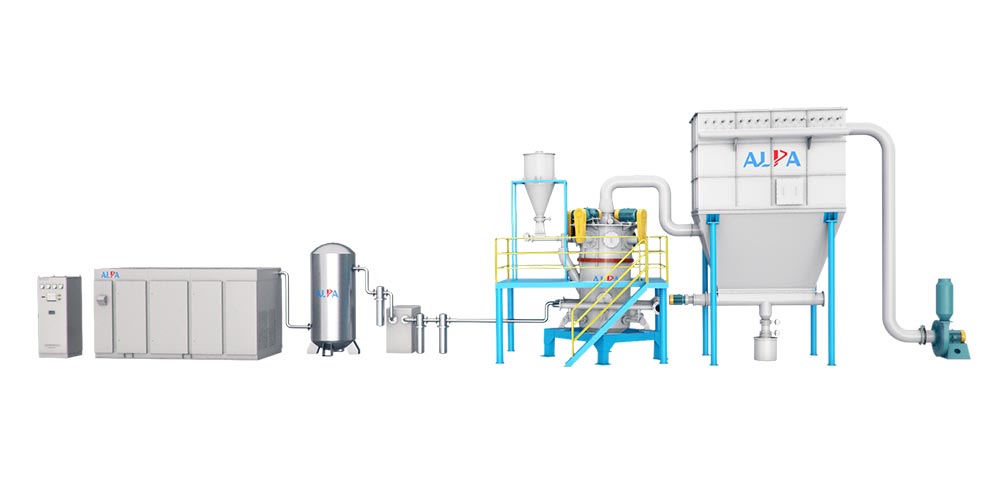
Below, I will introduce some features of the jet mill. The particles of the product can be adjusted, the particle shape is good, and the particle size distribution is relatively uniform.
- No heating, especially suitable for ultra-fine grinding of heat-sensitive materials.
When developing new materials in the laboratory, another form is to consider the way that cold air is used for mechanical pulverization and cooling, and compare the pulverization performance and the feasibility of the process, because in actual production, the mechanical pulverization function can solve many problems, as much as possible Use mechanical powder more often. Under normal circumstances, the energy consumption of the mill is very high.
- The pollution is small, because the crushing principle is the collision and crushing of the material itself. Compared with other forms of crushing, it will bring other grinding media with the blade or ball mill, and the airflow crushing pollution is the least, so it is especially suitable for the pharmaceutical and food industries.
- Easy to clean, the mill is relatively small compared to other ultra-fine pulverizers, especially the spiral jet mill, with simple structure, easy to clean, no dead ends, and can be used as a sterile medicine to pulverize.
The disadvantages are: high-power air supply equipment is required. Of course, laboratory equipment can be replaced with nitrogen gas cylinders.
How to improve the grinding efficiency of jet mill
In recent years, with the development of modern industry, ultra-fine and ultra-fine pulverization technology has received more and more attention, especially the quality of the pulverization effect of raw materials in the pharmaceutical and chemical industries directly affects the subsequent process. The jet mill is the best in the current ultrafine and ultrafine grinding equipment, especially the disc type (spiral) jet mill because of its simple structure, easy disassembly and assembly, and good grinding effect. It has won many pharmaceutical and chemical companies. Favored, it has become a typical equipment for grinding high-purity, low-fineness products.
Airflow grinder requires a complete process system. How to maximize its function and reduce loss is also a crucial issue.
The compressed air after filtering and drying of the airflow grinder brings the animal material to rub against each other, so as to achieve the grinding effect; in the process of the disc airflow grinder, 80% of the electric power consumption is in the air source part of the compressed air. Making full use of compressed air is actually saving electricity to the greatest extent. How to scientifically adjust the jet mill to run under ideal conditions to improve the efficiency of the jet mill is the concern of many user manufacturers.
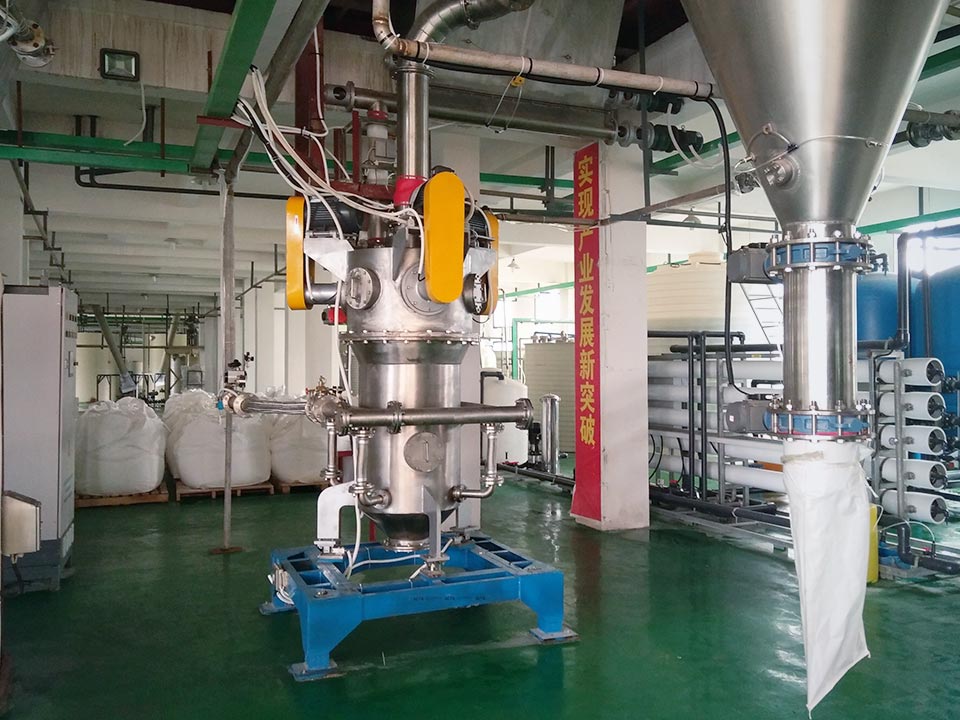
- Adjustment of feeding speed
The feeding speed determines the time for the materials to collide and grind in the grinding chamber. The feed speed is slow, the material stays in the grinding cavity for a long time, the number of particle cycles is large, and the grinding degree is more sufficient, so the grinding fineness is smaller; but too slow, the number of particles in the grinding cavity is too small, resulting in fewer collisions , Thus failing to achieve the desired effect. If the feed is too fast, there will be too much material in the grinding chamber, and the grinding fineness will be more effective.
Experiments have proved that uniform and stable feeding can ensure the stability of the swirling flow field in the grinding cavity. Adjust the feeding speed to make the gas-solid ratio in the grinding cavity reach the ideal state, so that the material particles can get the maximum and effective collision times, thereby increasing the grinding machine s efficiency.
- Change the speed of the grading ring or the grading wheel
The grading ring of the disc jet mill is equipped with grading. It is not as convenient and simple to adjust as the fluidized bed (classified) jet mill. Different materials have different properties, and the same working conditions have different smashing effects. It does not reach agreement, and requires a lot of experimental experience to get it.
Due to the rotation of the grading wheel, the internal swirling flow field in the crushing chamber is stabilized, so that the material is fully crushed, and the coarser materials can never pass through the grading wheel and can only return to the crushing chamber to continue crushing. Under the action of high-speed airflow, a large pulverization efficiency is achieved, and the fluidized bed jet mill also has certain advantages.
- Reasonable design of grinding nozzle
The shape of the nozzle is the key to reducing the energy loss at the nozzle. The compressed air passing through nozzles of different shapes will produce airflows of different speeds. Improper nozzle design and processing will directly lead to the failure of the speed of the pulverizing airflow or the more serious nozzle wear. The worn nozzle will deflect the airflow, causing part of the airflow to do work ineffectively and affect the pulverization efficiency.
- Other factors
In addition, there are other factors that should not be underestimated. For example, the hardness of the material to be ground is too hard, and the grinding cavity of the grinder is more severely worn. At this time, we need to replace the ultra-hard lining, such as ceramic corundum, which greatly reduces The abrasion of small materials to the grinding chamber and improve the purity of the collected materials.
In addition, in the pharmaceutical and chemical industries, materials that are easy to stick to walls such as moisture absorption and static electricity are often exposed. The materials adhere to the grinding cavity, discharge port, and receiver, which affects the progress of the entire process. Then you need to replace the special anti-sticking lining in the crushing chamber, spraying or lining the anti-sticking coating and lining in the receiver; reduce the length of the pipeline and the contact area of materials as much as possible, and improve the collection rate of materials. Effective antistatic equipment is also needed to treat materials containing static electricity.
After careful adjustment and maintenance, tap the potential of the jet mill, and use the machine more efficiently under the condition of ensuring the particle size index, which is of great significance for saving energy and reducing costs.
What are the factors that affect the grinding efficiency of jet mills?
Jet mill is a kind of equipment that uses high-speed air flow energy (300~500m/s) or superheated steam (300~400℃) to make powders collide, collide, and rub against each other to make them grind. The nozzle sprays high-pressure air or high-pressure hot air, and then rapidly expands to form a high-speed airflow. Due to the large velocity gradient near the nozzle, most of the grinding occurs near the nozzle. The collision frequency between particles in the grinding chamber is much higher than the collision frequency between particles and the wall, that is, the main function of the jet mill is the collision between particles.
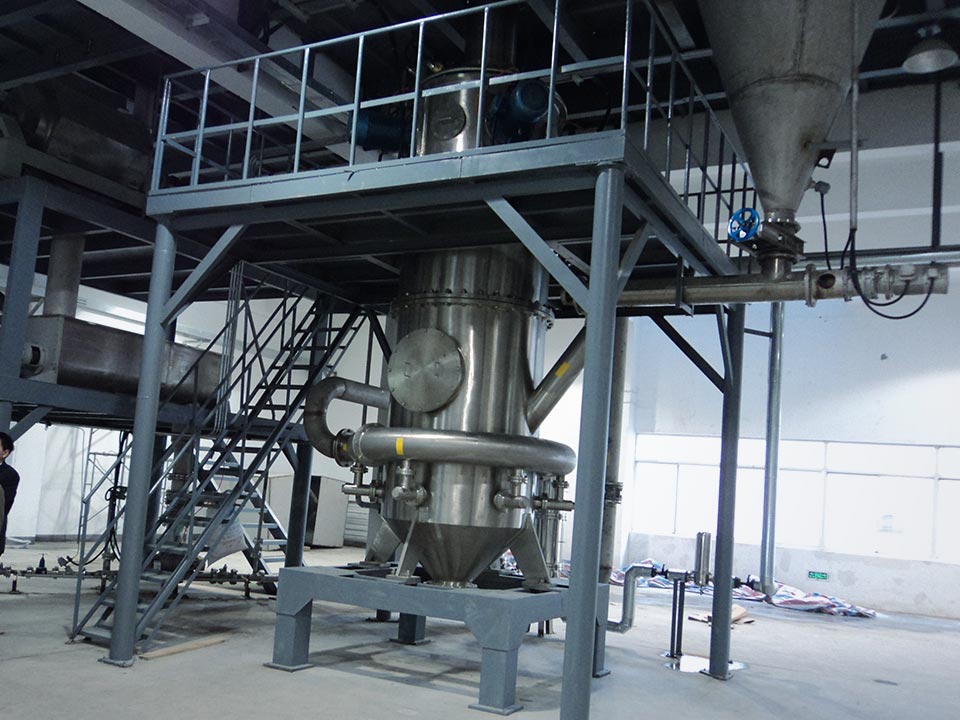
The control of the final particle size of the product by the jet mill mainly depends on the raw material particle size, crushing pressure, feeding pressure, feeding speed and other parameters. The logical relationship between the pneumatic grinding device and these parameters is specifically: the smaller the particle size of the raw material, the higher the grinding efficiency, on the contrary, the larger the particle size, the lower the grinding effect. When the grinding pressure and feed pressure are constant, reducing the feed rate will make the product finer, and increasing the feed rate will make the product coarser. When the feed rate is constant, increase the grinding pressure, the product size will become finer, and reduce the grinding pressure, the product will become coarser.
Therefore, particle size control is achieved by adjusting the parameters in the grinding process of the jet mill to achieve different pulverization finenesses. Before pulverization, the relationship between the feeding speed and pressure must be determined first, and then the appropriate pulverization parameters must be determined to meet different requirements. Granularity requirements.
The advantage of the jet mill is that it grinds no pollutants. After grinding, the compressed supersonic airflow speed decreases and the volume increases. It is an endothermic process and has a cooling effect on the material. It is especially suitable for ultrafine grinding. The jet mill uses supersonic airflow to accelerate the speed of particles, collide with each other or grind materials to achieve the grinding effect.
In order to increase the collision speed, a number of evenly distributed sub-nozzles are set around the main nozzle to accelerate the material particles around the main nozzle into the central area of the main stream. The feed nozzle is located in the center of the main nozzle, and the fluidized particles can be directly sucked into the center of the main nozzle to achieve a higher collision velocity.
At present, the jet milling equipment used in industry includes: flat plate, circulating tube, target type, convection type, fluidized bed type.
Influencing factors of the grinding effect of jet mill
Research results show that the grinding effect of the jet mill is affected by factors such as gas-solid ratio, feed particle size, working fluid temperature, and working fluid pressure.
- Gas-solid ratio
If the gas-solid ratio is too small, the gas flow energy will be insufficient, which will affect the fineness of the product; on the contrary, if the gas-solid ratio is too large, it will not only waste energy, but also deteriorate the dispersion performance of certain materials.
- Feed size
When grinding hard materials, the particle size requirements of the feed materials are also stricter. For titanium powder, the crushed calcined material should be controlled at 100~200 mesh; the surface treatment material grinding is generally 40~70 mesh, not more than 2~5 mesh.
- Working fluid temperature
At high temperatures, the gas flow rate in the working fluid increases. Take air as an example. The critical velocity at room temperature is 320m/s. When the temperature rises to 480℃, the critical velocity can be increased to 500m/s, and the kinetic energy is also increased by 150%. The effect is favorable.
- Pressure of work material
The working hydraulic pressure is the main parameter that produces the jet flow rate and affects the grinding fineness. Generally speaking, the higher the working pressure and the faster the working speed, the greater the kinetic energy, which mainly depends on the grindability and fineness requirements of the material.
- Grinding aids
During the grinding process of the jet mill, if a suitable grinding aid is added, not only the grinding efficiency can be improved, but also the dispersibility of the product in the medium can be improved.
How to solve the problem of excessive dust when the jet mill is working
The jet mill, cyclone separator, dust collector, and induced draft fan constitute a complete pulverization system. After the compressed air is filtered and dried, it is sprayed into the crushing chamber at high speed through the Laval nozzle. At the intersection of multiple high-pressure airflows, the materials are repeatedly collided, rubbed, and sheared to be crushed. The crushed materials rise with the suction of the fan. The air flow moves to the classification zone, and the coarse and fine materials are separated under the strong centrifugal force generated by the high-speed rotating classification turbine. The fine particles that meet the particle size requirements enter the cyclone separator and dust collector through the classification wheel for collection, and the coarse particles descend to the grinding zone to continue grinding .

Sometimes the difference in operation mode and settings will make the crusher's crushing effect poor. Whether it is to increase the speed of the extension or set the parameters, it will not achieve good results. So what to do in this situation, let me tell you about it below. Ways to improve the crushing effect.
To increase the feed rate, the principle of airflow pulverization mainly relies on the high-speed airflow to cause strong collisions between the material and the material, and the material and the inner wall to achieve the pulverization effect. If the feed is too little, the purpose of frequent and strong collisions cannot be achieved, so that the strength cannot be lowered. In addition, if the fan damper is too large, the internal negative pressure will be too large and the collision will be reduced; on the contrary, the positive pressure is not good.
The jet mill is used to crush materials, so the crushed materials and tailings must be discharged in time. When the crusher discharges these crushed materials, there will be dust. So how to solve if the dust is too large?
- Install the dust collector: Generally, this type of dust collector can be used with a grinder. It collects the dust in the collection bag, and the dust is filtered and discharged from the dust box through the cloth bag;
- The cloth bag is dustproof: the cloth bag is tightly tied to the powder outlet of the machine to prevent air leakage and powder leakage. Attention should be paid during operation: the powder outlet should be blocked when parking, and the dust should be cleaned up in time.
- Dust removal by wood shower or pool: Mainly use a ventilator to vacuum to the outside of the grinding room, and then use a spray to vacuum, or use a pool to vacuum, etc.
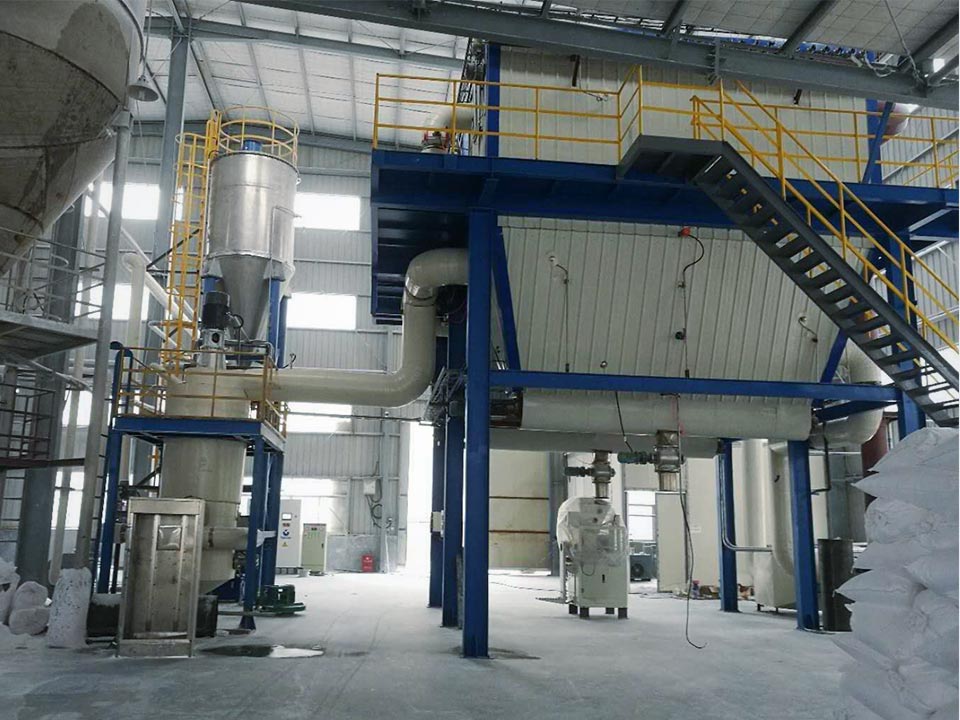
The above three dust removal methods can achieve good dust removal effects and can solve the problem of excessive dust. Generally, these dust removal devices are installed before work to prevent excessive dust.
How to deal with the blockage of jet mill
There are many grinders in our daily life, such as small grinders, Chinese medicine grinders, jet grinders, and so on. But in the process of use, sometimes there will be some failures, sometimes the grinder is blocked, when it is blocked, how should we deal with it? In fact, clogging is a very common failure of the grinder during grinding, and the main reason is still caused by the operation.
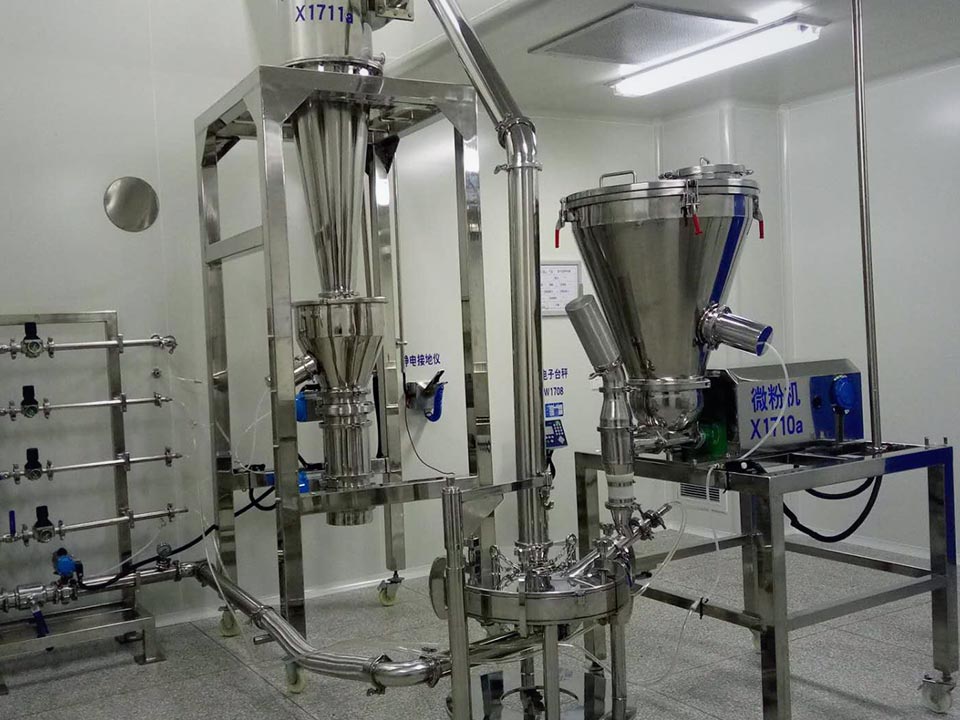
1. The feeding speed is too fast and the load increases, causing blockage. During the feeding process, you should always pay attention to the large deflection angle of the ammeter pointer. If it exceeds the rated current, it indicates that the motor is overloaded, and the motor will be burnt if overloaded for a long time. In this case, the feed door should be reduced or closed immediately, or the feeding method can be changed, and the feed amount can be controlled by increasing the feeder. There are two types of feeders: manual and automatic. The user should choose the appropriate feeder according to the actual situation. Due to the high speed of the grinder, the large load, and the strong fluctuation of the load. Therefore, the current when the grinder is working is generally controlled at about 85% of the rated current.
2. The discharging pipeline is not smooth or blocked and the feed is too fast, which will block the tuyere of the grinder; improper matching with the conveying equipment will cause the discharging pipeline to weaken or become blocked after no wind. After the fault is detected, the unmatched conveying equipment should be cleared first, and the feeding amount should be adjusted to make the equipment operate normally.
3. The broken or aging of the hammer, the closed or broken screen mesh, and the high water content of the ground material will cause the grinder to be blocked. The broken and severely aged hammers should be updated regularly, the grinder should be kept in good working condition, and the screen should be checked regularly. The water content of the ground material should be less than 14%, which can improve production efficiency, prevent the grinder from clogging, and enhance the reliability of the grinder.
These are the ways to deal with the clogging of the grinder. It is very common for the machine to malfunction. The most important thing is that we must know the way to solve the problem. This is a factor that makes the grinder longer service life. In addition, maintaining the machine is also very important.
What are the irreplaceable functions of the jet mill
Jet mills are widely used in chemical, mineral, metallurgy, abrasives, ceramics, refractory materials, medicine, pesticides, food, health products, new materials and other industries. The reason why it is chosen as the factory production equipment is that the jet mill does have an irreplaceable role.
The working principle of the jet mill: Qualified fine powder is brought into the turbo classifier on the upper part of the fluidized bed by the updraft, and the qualified materials are classified by the jet mill and enter the cyclone collector. A vertical turbine classifier). The finer tailings are brought into the bag filter by the airflow, and after being filtered by the bag filter, the tailings enter the discharge port at the lower part of the filter, and the pure air is evacuated.

The main components of the machine: standard vertical turbine classifier, grinding and classifying are coordinated and completed simultaneously. The speed of the powder concentrator can be adjusted by frequency conversion, and the fineness of the product can be adjusted arbitrarily. For example, if a processing process requires products with multiple particle sizes, you can add two to four more than one classifier as the standard, so that the machine becomes a two-machine five-machine for grinding and classification.
Scope of application: The grinding mechanism of the jet mill determines its wide application range, with high fineness and high purity of the finished product. Typical materials include superhard diamond, silicon carbide, metal powder, ceramic pigments, medicine, biochemistry, etc. By changing the ordinary air in the gas source into inert gases such as nitrogen and carbon dioxide, the machine can be used as an inert gas protection device, suitable for the grinding and classification of flammable, explosive, and oxidizing materials.
Application of jet mill:
- High hardness materials: silicon carbide, various corundum, boron carbide, alumina, zirconia, garnet, zircon sand, diamond, etc.
- Non-metallic minerals: timing, graphite, kaolin, calcium carbonate, mica, barite, mullite, medical stone, wollastonite, talc, pyrophyllite, etc.
- Chemical industry: aluminum hydroxide, silica gel, various dyes, epoxy resins, various additives, etc.
- Food and medicine: pollen, hawthorn, pearl powder, Ganoderma lucidum, various vegetable powder, various Chinese herbal medicine, various health products, cosmetics, antibiotics, etc.
- Metal materials: aluminum powder, magnesium powder, zinc powder, tin powder, copper powder, etc.
- Other materials: ceramic materials, refractory materials, electronic materials, magnetic materials, rare earth materials, phosphors, copy material powders, etc.
Features of air classifier:
- Large output, low energy consumption and high classification efficiency.
- Concentrated particle size: This machine uses the original vertical impeller for classification. The stable classification technology and special sealing measures effectively prevent the leakage of particles, so that the product has no large particles, the particle size is concentrated, and the classification accuracy is high.
- Reasonable structure: products with 1-6 granularities can be produced at the same time according to user requirements.
- Strong applicability: It can be combined with various mills (jet mill, mechanical mill, ball mill, Raymond mill, vibration mill, etc.) to form a closed-circuit or open-circuit joint operation.
- High degree of automation.
Preparation and inspection of the superfine grinder before use
Jet mills use high-speed airflow to perform ultra-fine grinding of materials. At present, there are five types in the industry, which can be divided into horizontal disc (flat) jet mills, circulating tube jet mills, target jet mills, reverse jet mills and fluidized bed jet mill. The ultra-fine grinder uses air separation, heavy pressure grinding, and shearing to achieve ultra-fine grinding of dry materials. It is composed of cylindrical grinding chamber, grinding wheel, grinding rail, fan, material collection system and so on.

The inspection items before preparation and use are as follows:
1. Check the grinder and grading system to check whether there are metal objects and debris in the grinding room;
2. Check whether there are metal objects and sundries in the feeding hopper and feeding screw of the superfine grinder;
3. Check whether the ultra-fine grinder tightens the fasteners;
4. Whether the elasticity of the transmission belt of the ultra-fine grinder is moderate, and whether the protective cover has been installed;
5. Check the collision of the transmission parts, if there is any abnormality, analyze the reason and eliminate it in time;
6. Turn the transmission parts to see if there is any abnormality, then move the parts to check whether the operation direction is correct;
7. Run the ultra-micro grinding machine without load for 20-30 minutes, and observe the working current, temperature and vibration: the temperature rise of the spindle bearing should not exceed 35℃, and the highest target temperature should not exceed 70℃ (in different environments, the temperature is generally not more than 40 ℃); The vibration amplitude of machinery and equipment should not be too large. It can be put into production after normal no-load operation;
8. The superfine grinding machine should properly open the upper and lower air doors of the gravity dust collector room.
Three major processes of jet mill that must be mastered
As an important pulverizer, the operation process of the jet mill must be mastered first. Only when you understand the safe operation rules can you perform correct operation.
-
Preparation before starting
(1) After receiving the production instruction, prepare the materials in advance.
(2) Inspect the pipes, fastening bolts, gaskets, spindle bearings and instrument panels to see if they are intact, and if everything is normal and flexible.
(3) Sort out the scene to eliminate debris.
(4) Whether there are material deposits in the casing and separation equipment, and if so, eliminate the deposits.
(5) Inspect the transportation pipeline and its auxiliary equipment to see if there is any blockage, air leakage or poor sealing in the pipeline, whether the auxiliary equipment is intact, and whether it can work normally.
(6) Whether the lubrication of the rolling bearing is good and timely.
-
Start the jet mill
(1) Start the jet mill first, control the start current and time, so that the equipment can start to run. When the equipment is running normally, start feeding, and the feeding amount can be adjusted appropriately according to the characteristics of the material.
(2) The material should be fed evenly and continuously, and it should not be large or small, which will harm the separation effect of the jet mill and easily cause the equipment to malfunction.
(3) In the operation process, once an abnormality is found, it should be stopped immediately for inspection, and the operation can only be continued after the fault is eliminated.
-
Shutdown and inspection of jet mill
(1) Stop feeding until the materials in the shredder casing are all ground and separated, then turn off the motor. Let the equipment run idle for another 3 minutes, and then press and hold the stop button to stop the equipment.
2) After the equipment stops, open the inspection door to check the wear condition of the wearing parts.
(3) Fill in the corresponding production records and upgrade the equipment status markings for the next drive.
Classification and working principle of jet mill
Jet mill, as one of the ultrafine grinding equipment, is also one of the important equipment in the grinding industry. After the compressed air of the fluidized bed pulverizer is frozen, filtered and dried, it forms a supersonic airflow through the nozzles and is injected into the pulverizing chamber to fluidize the material. The accelerated material merges at the intersection of the jet airflows of several nozzles, resulting in violent The collision, friction and shearing of the particles can achieve ultra-fine grinding of the particles.
The ground material is transported to the impeller classification area by the rising airflow. Under the action of the centrifugal force of the classification wheel and the suction force of the fan, the coarse and fine powder are separated. The airflow enters the cyclone separator, the fine dust is collected by the bag filter, and the purified gas is discharged by the induced draft fan. The flat jet mill has a wide range of applications due to its simple structure and easy manufacturing.
Structure: It is mainly composed of crushing chamber, nozzle opening, discharge opening, air flow outlet, compressed air inlet, classification zone, etc.
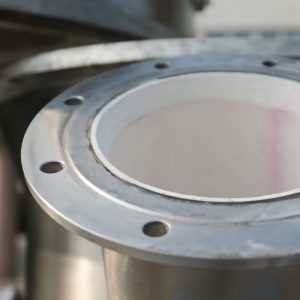
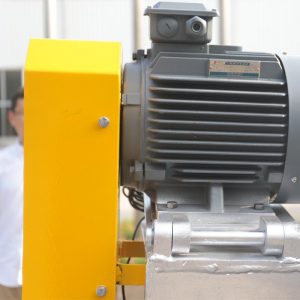
Working principle: The compressed air or superheated steam is transformed into high-speed air flow through the nozzle. When the material is sent into the crushing chamber through the feeder, it is sheared by the high-speed air flow. The strong impact and intense friction make the material grind into ultra-fine products. It is widely used in ultrafine grinding of non-metallic minerals and chemical raw materials. The particle limit of the product depends on the solids content in the confluent gas stream. Under the opposite ratio of unit energy consumption, the products produced by jet mill are more refined, particle size distribution is more uniform, activity is also greater, and the dispersion performance is better than the price. Due to the Joule-Thomson cooling effect caused by the adiabatic expansion of the compressed gas during the grinding process, some low-melting or heat-sensitive materials can be used in the grinding process.
The classification of jet mills currently has the following five types in the industry. They can be divided into horizontal disc (flat) jet mills, circulating tube jet mills, target jet mills, counter jet jet mills and fluidized bed jet mills.
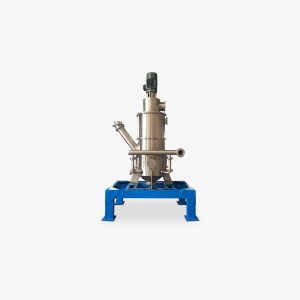
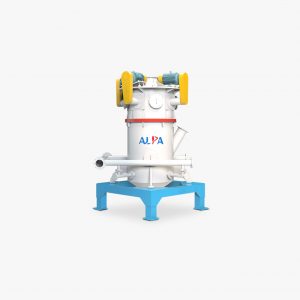
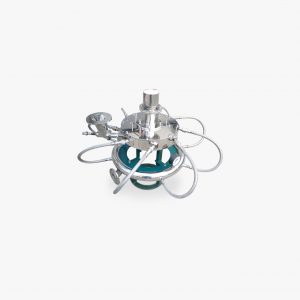
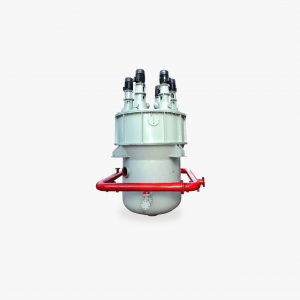
The principle of airflow grinding: dry oil-free compressed airflow or too many nozzles, high-speed jet drives the material to move at a high speed, causing the material to collide, rub and compress. The crushed material reaches the classification area with the airflow, and the material that meets the fineness requirements is finally collected by the collector . If the material does not meet the required particle size, return to the crushing chamber, continue grinding until the required fineness is reached, and stop setting. Due to the high velocity gradient near the nozzle, most of the grinding occurs near the nozzle. In the crushing chamber, the collision frequency of particles and particles is much higher than the collision frequency of particles and the device wall. In other words, the main grinding effect of jet mill is the collision or friction between particles.

